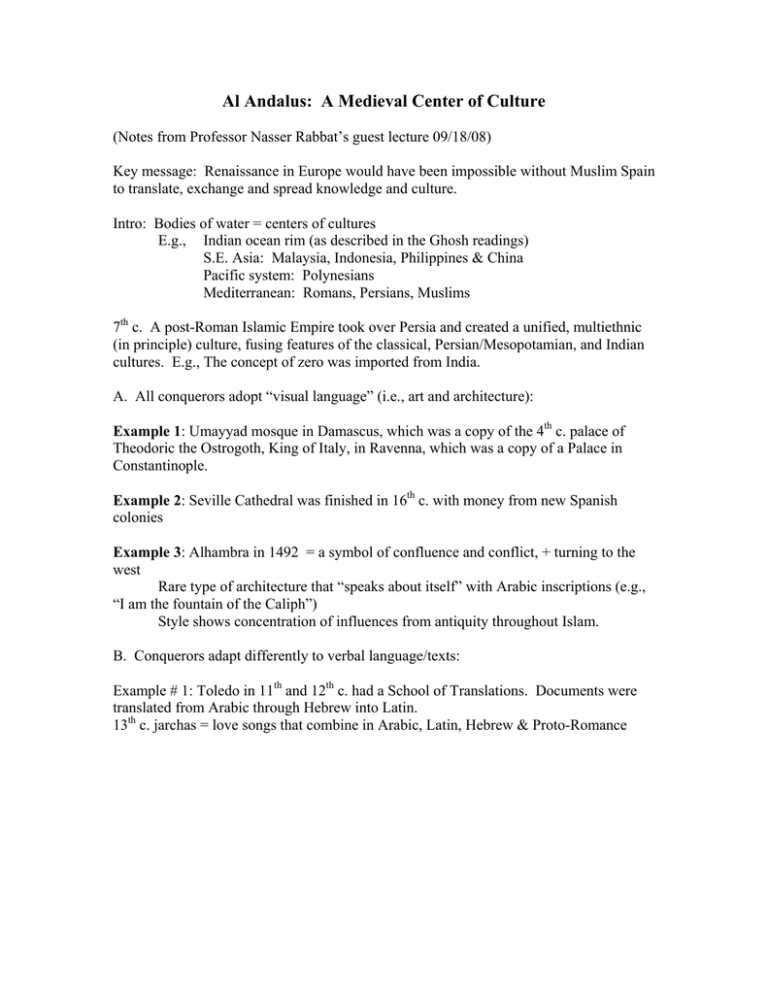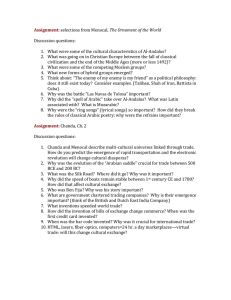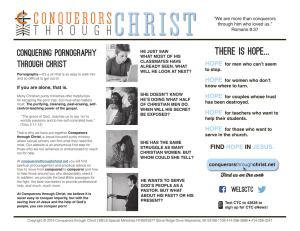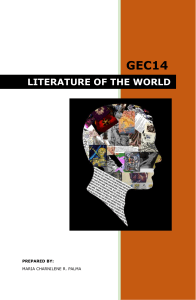Al Andalus: A Medieval Center of Culture
advertisement

Al Andalus: A Medieval Center of Culture (Notes from Professor Nasser Rabbat’s guest lecture 09/18/08) Key message: Renaissance in Europe would have been impossible without Muslim Spain to translate, exchange and spread knowledge and culture. Intro: Bodies of water = centers of cultures E.g., Indian ocean rim (as described in the Ghosh readings) S.E. Asia: Malaysia, Indonesia, Philippines & China Pacific system: Polynesians Mediterranean: Romans, Persians, Muslims 7th c. A post-Roman Islamic Empire took over Persia and created a unified, multiethnic (in principle) culture, fusing features of the classical, Persian/Mesopotamian, and Indian cultures. E.g., The concept of zero was imported from India. A. All conquerors adopt “visual language” (i.e., art and architecture): Example 1: Umayyad mosque in Damascus, which was a copy of the 4th c. palace of Theodoric the Ostrogoth, King of Italy, in Ravenna, which was a copy of a Palace in Constantinople. Example 2: Seville Cathedral was finished in 16th c. with money from new Spanish colonies Example 3: Alhambra in 1492 = a symbol of confluence and conflict, + turning to the west Rare type of architecture that “speaks about itself” with Arabic inscriptions (e.g., “I am the fountain of the Caliph”) Style shows concentration of influences from antiquity throughout Islam. B. Conquerors adapt differently to verbal language/texts: Example # 1: Toledo in 11th and 12th c. had a School of Translations. Documents were translated from Arabic through Hebrew into Latin. 13th c. jarchas = love songs that combine in Arabic, Latin, Hebrew & Proto-Romance MIT OpenCourseWare http://ocw.mit.edu 21G.076 Globalization: the Good, the Bad, and the In-Between Fall 2009 For information about citing these materials or our Terms of Use, visit: http://ocw.mit.edu/terms.




